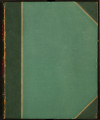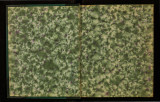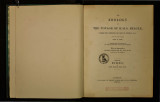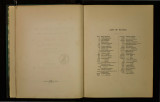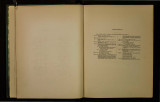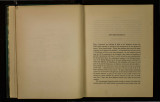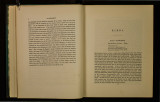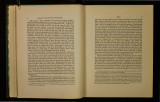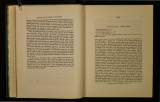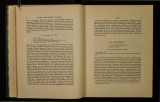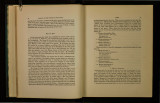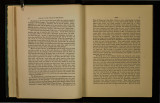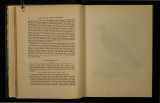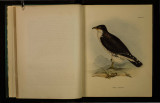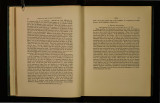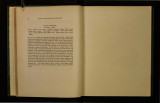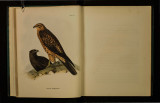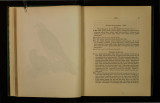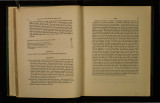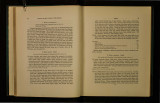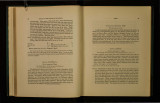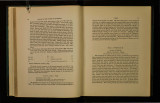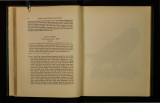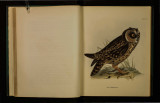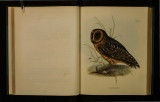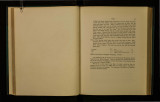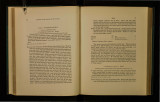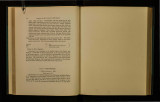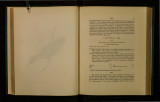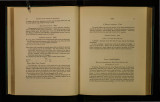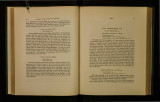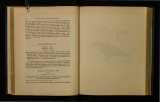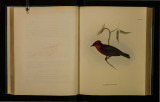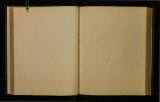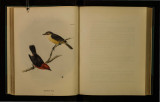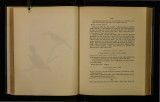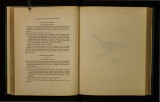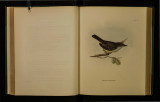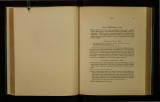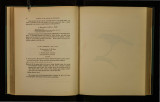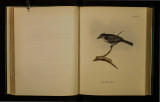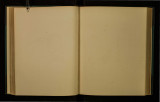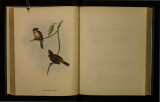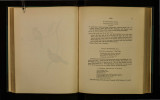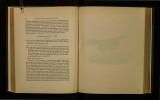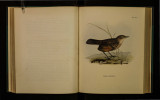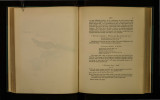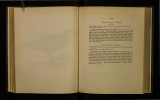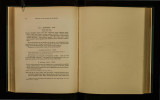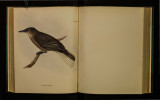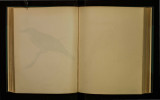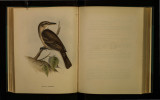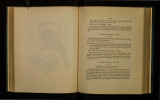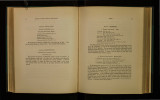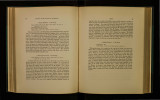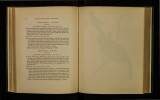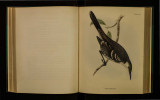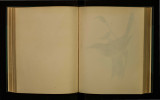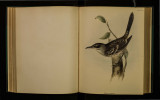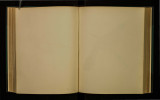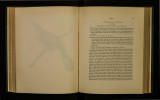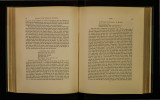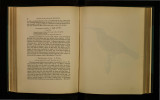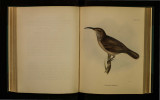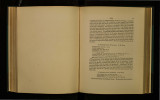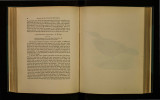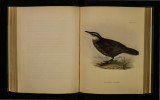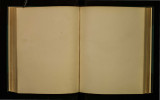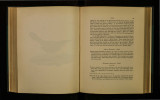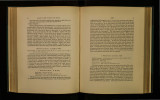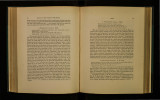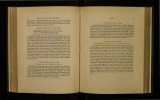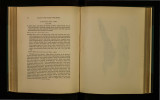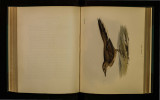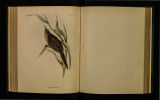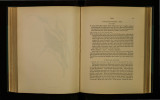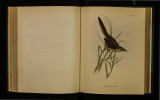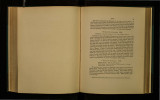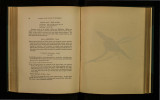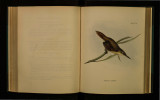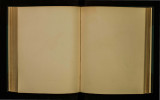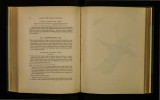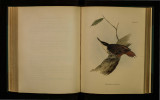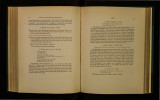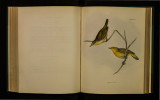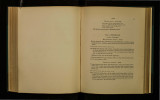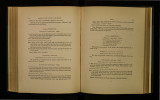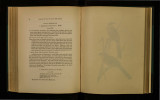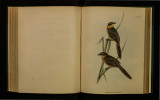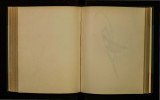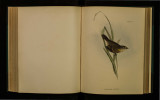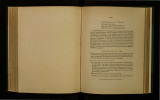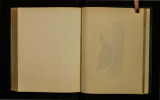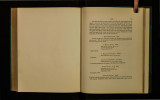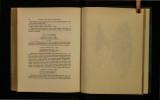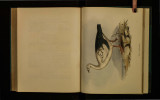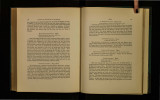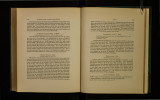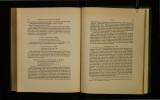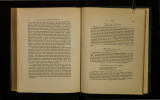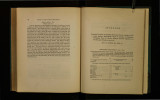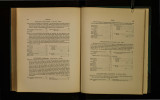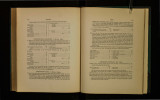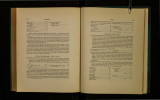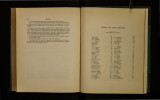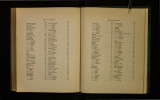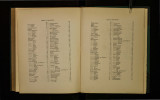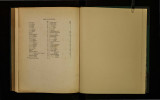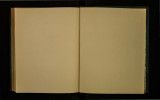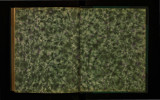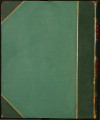| OCR Text |
Show 2-! ZOOLOGY OF TilE VOYAGE OF THE BEAGLE. Tarsi strong, feathered for nearly a third of their. length b~neath the joint. S 1 · und1'v1'ded (with the exception m some mstances of one) ca es m narrow, . bands, covering the front of tarsus. Toes very strong a~d rather long, hke those of the species of Milvago, and much more so than m ~he gen?s Buteo. Hind-toe equal in length to the inner one; but not placed qm~e so htgh on the Tarsus as in Polyborus. Basal joints of middle toe covered with smal~ scales, with five large ones towards the extremity. Cla':s very strong, th1~~ a~d long, and rather more arched, and broader than m Poly~orus Braszlz~nsts; their extremities obtuse, but not in so great a degree as m some species of lflilvago. Inches. Total length from tip of bill to end of tail following curvature of body Tail . _ . Wing, from elbow-joint to extremity of longest primar~ . . · Bill, from tip to anterior edge of eye measured in a strrught line Tarsus, from soles of feet to centre of joint 20i Bi 15 Hind claw from tip to root, measured in straight line Claw of middle toe Old female. CoLoun.-N early as in young female, but with the breast dark brown. Young female. -lu 3! ln -ro-cfcr CoLoun.-Head, back of neck, back, wing coverts and tertiaries barred and mottled, both with pale umber brown (of the same tint as in the male bird) and with pale fulvous orange. On head and back of neck, each feather is of the latter colour, with a mere patch of the brown on its tip; but in the longer feathers, as in the scapulars, upper tail coverts, inner web and part of outer of the tertiaries, each is distinctly barred with the dark brown. Tail as in the old male. Primaries black as in male, with the inner webs nearly white, and marked with short transverse bars. Under surface and thighs of the same fulvons orange, but some of the feathers, especially those on the breast, are marked with small spots of umber brown on their tips. Some of the longer feathers on the flanks, on the under tail coverts, and on the linings 'of the wing, have irregular bars of the same. FoRM and SizE.-Larger and more robust than the male. Total length 24 inches. Tail ten and a half inches long, and therefore longer in proportion to the wings than in the other sex. Wings from joint to end of primaries, 17! . Habitat, Galapagos Archipelago, (October). BIRDS. 25 This bird is, I believe, confined to the Galapagos Archipelago, where on all the islands, it is excessively numerous. It inhabits, indifferently, either the dry sterile region near the coast, which, perhaps, is its most general resort, or the damp and wooded summits of the volcanic hills. This bird, in most of its habits and disposition, resembles the Milvago leucurus, or the Falco Novce Zelandice of older ~utho~·s. It is extremely tame, and frequents the neighbourhood of any building mhab1ted by man. When a tortoise is killed even in the midst of the woods, these birds immediately congregate in great numbers, and remain either seated on the ground, or on the branches of the stunted trees, patiently waiting to devour the intestines, and to pick the carapace clean, after the meat has been cut away. These birds will eat all kinds of offal thrown from the houses, and dead fish and marine productions cast up by the sea. They are said to kill young doves, and even chickens; and are very destructive to the little tortoises, as soon as they break through the shell. In these respects this bird shows its alliance with the buzzards. Its flight is neither elegant nor swift. On the ground it is able, like the M. leucurus and Pltalcobcenus rnontanus of D'Orbigny, to run very quickly. This habit which, as before observed, is so anomalous in the F~lcons, manifests in a very striking manner the relation of this new genus With the Polyborince. It is, also, a noisy bird, and utters many different cries, one of which was so very like the shrill gentle scream of the M. cltirnango, that the officers of the "Beagle" generally called it either by this name, or from ~ts larger size by that of Carranclta,-both names, however, plainly indicating Its close and evident relationship with the birds of that family. The craw is feathered; and does not, I believe, protrude like that of the P. Brasiliensi~ or ~I. leucurus. It builds in trees, and the female was just beginning to lay in October. The bird of which the full figure has been given, is a young female, but ~f, at least, one year old. The old male-bhd is of a uniform dusky plumage, and 1s seen behind. The adult female resembles the young of the same sex, but the breast is dark brown like that of the male. In precisely the same manner as was remarked in the case of the M. leucu1·us, these old females are present in si.ngular]~ few proportional numbers. One day at James' Island, out of thirty bn·ds, whiCh I counted standing within a hundred yards of the tents, under which we were bivouacked, there was not a single one with the dark brown breast. F~om this circumstance I am led to conclude that the females of this species (as With the ~f. leucurus) acquire their full plumage late in life. E |


